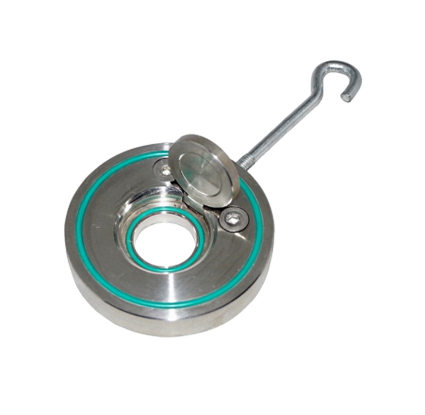|
|
A single plate is commonly known as a wafer check valve, swing check valve, or single disc check valve. They are designed to be used on flanges of standards ANSI, DIN OR JIS. It is a check valve type used mainly to prevent backflow in pipeline installation. The single plate check valve is available in sizes ranging from 1 1/2” to 6” and can withstand a working pressure of 232 PSI. Made of Stainless Steel and CF8M, the single plate check valve has very high corrosion resistance. The connection types for a single plate check valve are JIS 5K Flange End, PN16 Flange End, ANSI 150# Flange End, and JIS 10K Flange End. The single plate check valve is made following the ASME B16.34 standards. |
Material Specification |
|
Connection Type |
|
Size |
|
Working Pressure |
|
1. What are Single Plate Check Valves?
|
Single plate check valves are check valves designed to allow the flow of fluids in one direction. Also, Single plate check valves are made according to the ASME B16.34 standards and are compatible with connectors of ANSI, DIN, or JIS standards. This check valve's sizes are between 1 1/2” to 6” to enable it to fit into different systems.
The single plate check valves are made from stainless steel and CF8M materials. Single plate check valves are suitable for pipeline installation and enhance the flow of liquid and gases in the pipes. API 598 is the standard for testing the valve after production to ensure it meets the requirements and avoids damaging tools during operation. The single plate check valves are compact and fit in a set of flanges. This makes it easy to install and clean during maintenance checks. |
The table below shows the components and materials:
|
2. What is a Single Check Valves used?
|
The single plate check valves work in a similar way to the swing check valve. The single plate check valve's complete set has about six components, which include the body, washer, bolt, eye bolt, disc, and O-ring. It’s important to state that single plate valves are classified as low pressure valves with a working pressure of 16 bars. The valve is made of a solid body with an inclusion of a thin plate profile placed in the middle, allowing easy installation with flanges. Flanges are devices that serve as connectors of pipes, tubes, and hoses to make up a piping system or attaching to a hydraulic system.
The single plate check valve's disc and seat perform a major function in controlling the flow of fluids. During operation, the fluids flow in a single direction and raise the disc from the valve seat. In a case where backflow occurs, the fluid flow drives the disc to the valve seat, leading to a closure of the valve and stoppage of fluid flow. The valve is being held in a significant position by the flange screws. Screw numbers depend on the size of the valve being used, and an O-ring seal applied on the valve keeps it free from external damaging factors. |
3. What are the differences between Single Plate Check Valves and Dual Plate Check Valves?
Check valves are automatic valves used in systems and pipeline installation to prevent backflow. They are designed to allow fluid flow in a single direction. Check valves are produced in different types such as swing check valves, dual plate check valves, lift check valves, etc. They are mostly preferred because it needs no workforce or supervision to fully operate and perform its main function which is to prevent fluid reversal.
Dual plate check valve also known as non-return valves performs the same function as the single plate check valves. They are used in low pressure systems to ensure no backflow of fluids during operation, and both are the most used check valves applied in several industries. With this similarity, these two check valves have some distinct distinguishing features, which are discussed below:
Dual plate check valve also known as non-return valves performs the same function as the single plate check valves. They are used in low pressure systems to ensure no backflow of fluids during operation, and both are the most used check valves applied in several industries. With this similarity, these two check valves have some distinct distinguishing features, which are discussed below:
|
The table below shows the major differences between the single and dual plate check valve:
|
4. What do you need a Single Plate Check Valve?
|
The benefits of the single plate check valve are discussed below:
The advantages of single plate check valves?
|
5. How is Single Plate Check Valve installed?
To ensure the single plate check valves' effective functioning, the installation has to be hitch and problem-free. Any mistake in the installation process could reduce the efficiency of the system or damage other components in the system.
|
For the right installation process, please refer to the details below:
|
SINGLE PLATE CHECK VALVE CATALOGUE









